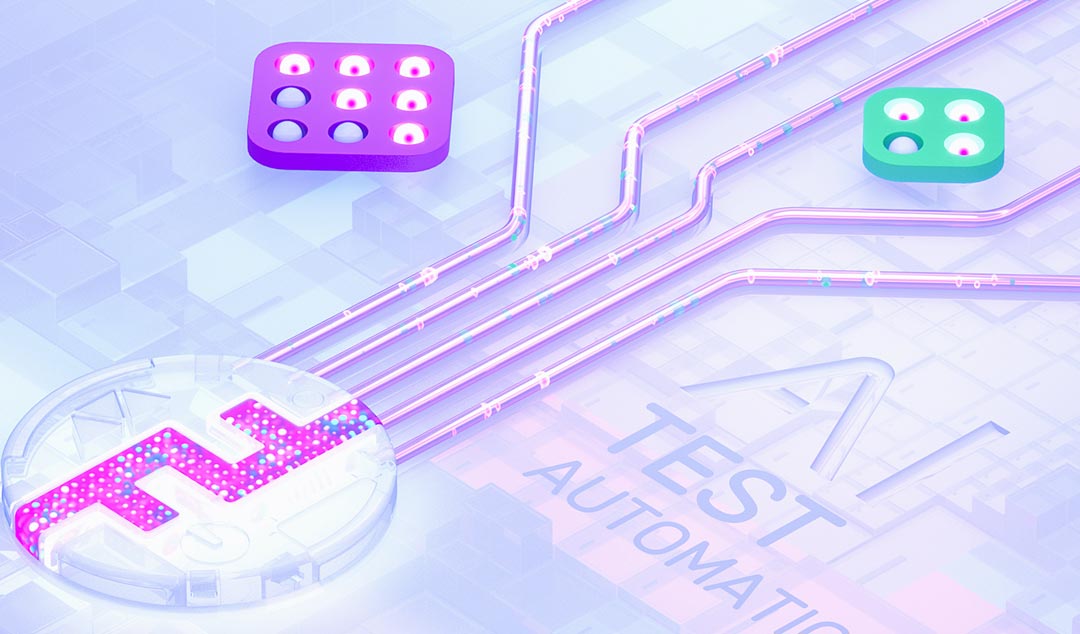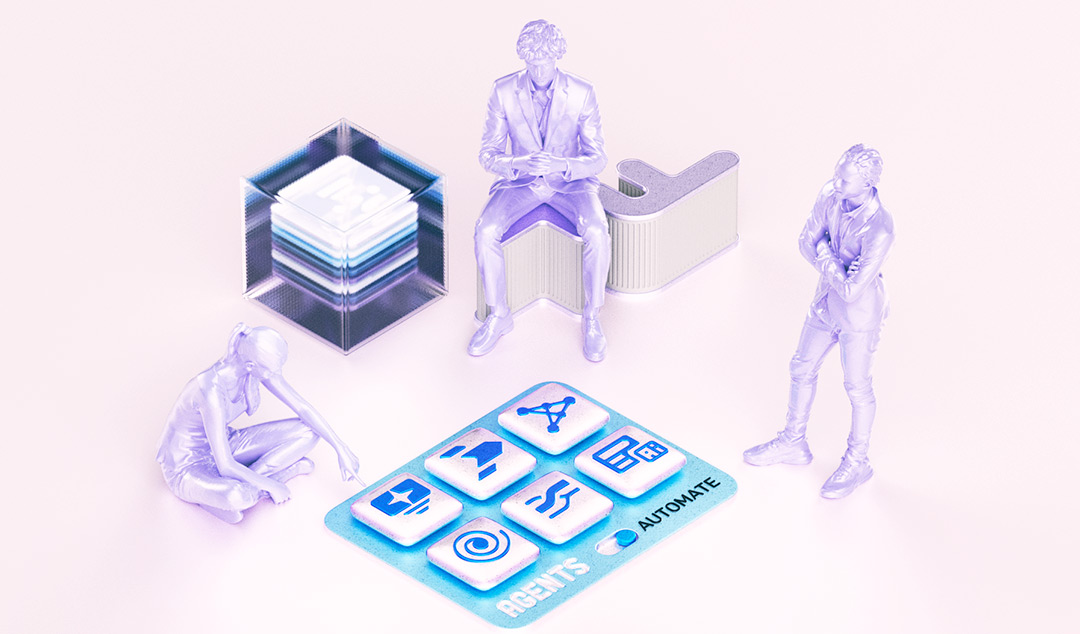AI Business Transformation - Getting It Right
If applied in the right way, AI business transofrm betters processes, boosts efficiency, and give significant ROI. Learn more in the article!

AI promises the world, but how can you be sure it will deliver?
Reaping the true rewards of AI business transformation
AI will transform the business landscape as we know it. But if you are to reap the rewards of AI business transformation you have to do it intelligently. In this blog, we explain the potential rewards and show you what you need to consider if you’re to get it right.
Introduction
There can be little doubt that Artificial Intelligence is capable of totally revolutionizing business as we know it. Applied in the right way, it can transform business processes, boost efficiency, and give significant ROI. However, all too often, AI is being applied in a dumb fashion, or the AI label is being misapplied. As a result, AI often fails to achieve the promised benefits. In this blog, we explore how to do it right and show how successful this has been for Functionize’s AI-driven autonomous testing.
What is AI
AI is a catch-all term for a group of technologies that seek to use intelligence to extract meaning from data. Probably the best known of these technologies are machine learning (teaching a machine to find patterns in numbers), image recognition (teaching a computer to analyze still and moving images), and natural language processing a.k.a. NLP (getting a computer to understand the meaning in natural language). All these technologies can be applied in business. Among notable success stories are:
- The use of AI chatbots to act as your first line support, allowing support staff to concentrate on dealing with more complex cases.
- Using AI for predictive analytics, allowing you to maximize productivity.
- Intelligent recruitment and CV matching, speeding up the process of sifting CVs and improving the chances of finding the right candidate.
- Spotting fraud and suspicious financial activity, saving you potentially huge costs as well as serving to improve customer trust.
- Early diagnosis of problems in machinery in mining and other heavy industry, reducing the risk of expensive failures.
- Intelligent supply chains, taking Kanban (or just-in-time delivery) to the next level.
These are just a few of the ways AI has been applied. But let’s take a step back and look at what AI can achieve for businesses in general.
AI Business transformation
What can AI bring to your business
AI isn't a magic bullet, but used intelligently it can transform your business, boosting ROI, and driving up efficiency.
Many people mistake AI for a magic bullet that will transform their business with a single shot. Sadly, this isn't the case. If you apply it correctly, AI has immense potential. But if you get it wrong it could just become an expensive white elephant. If you want to realize the true potential of AI for your business, you have to apply it intelligently. Let’s look at what the rewards might be.

Business transformation
AI is a truly disruptive technology. At least, it has the potential to be. We have already seen cases where AI has revolutionized the way we do things. AIs are now better at spotting skin cancer than skilled oncologists. AIs are the core enabler for self-driving vehicles. And in the world of business so-called intelligent agents are having a real impact. An intelligent agent is a specific form of AI which is dedicated to solving one problem and solving it well. IAs are focused, tireless, and driven, but still intelligent. They are particularly well-suited to the sorts of tasks that humans find dull, repetitive, and hard.
ROI
When you get it right, using AI in your business will generate a significant return on your investment. This comes about because of two things. Firstly, AIs never sleep, so they are productive 24/7, 365 days a year. Secondly, AIs can often replace or augment your existing staff. This is particularly true for unskilled jobs. So, your staff expenses will drop significantly.
Efficiency
One of the biggest impacts AI can bring is efficiency. A well-designed intelligent agent will complete its task far more efficiently than any human ever can. IAs are never ill, never sleeps, and never takes a vacation. In fact, they are like the perfect worker. Get it right and you could see productivity sky-rocket.
Unlocking the true potential of AI
So how can you make sure you are applying AI properly? How can you avoid some of the pitfalls and maximize your ROI? Actually, it isn’t rocket science, more like a healthy dose of common sense combined with standard good business practice.
Defining your requirements
Before you start on any AI project you must determine what you actually hope to achieve. You need to set concrete goals. To use a cliché, SMART (specific, measurable, attainable, realistic, and time-constrained) applies here as much as to personal goals.
Realizing the limitations
There is a temptation for senior managers to say AI is the solution to any and every problem that faces them. But, sadly, AI has real limitations. If your business processes are flawed, chances are no amount of clever AI is going to fix it. Equally, it’s essential you understand when AI simply cannot work. For instance, machine learning requires you to have a large volume of data to use to train your models. NLP will struggle if it’s asked to process documents full of industry slang. So, you have to work out how you can achieve AI business transformation.
Planning for change
If you want AI to transform your business, you have to plan things carefully. This may sound pretty obvious, but people sometimes seem to forget that AI has to be treated like any other disruptive technology. This means proper planning, getting buy-in from your team, planning how to roll out the new technology, and (importantly) contingency planning in case there is a hitch.
Understanding the costs
There are numerous frameworks out there to help you create machine learning models, etc. However, getting these right and tuning them is a job for a skilled data scientist. Such people are still rare (despite a growing number of specialized degree courses). Consequently, they are going to cost you a lot. Equally, to work properly, most forms of AI require significant computational power. Chances are this will only be available if you use one of the specialist cloud offerings like Amazon’s EC2 P3 instances.
AI in test automation
A case study in business transformation
In a previous blog, we looked at what AI is, and saw how it can be applied to test automation. Let’s recap briefly. As we saw, many AI techniques can all be applied to test automation. There are three main areas where AI can boost test automation: test creation, analysis of test results, and test maintenance. We looked at who should be applying AI to their test automation. In summary, it depended on three factors. The type of product you are testing – test automation works best for regression testing, so if your product is in constant flux or just being developed you may not see immediate benefits. How complex your UI/application is – the more complex it is, the more helpful AI will be. And finally, what development strategy you are using – AI test automation can transform life for companies running CI/CD.
What we have learned
Here at Functionize, we have been using AI to transform the world of test automation since 2015. During the past four years, we have learned several key lessons for AI business transformation. Without giving too much away, we’d like to share these.
1) Use AI when it works, but don't be afraid to use other data analytics approaches if needed. A good example of this is our approach to predicting user journeys. You can find out more about that here.
2) Combining approaches is often better than a single approach. The successful application of AI often needs you to use several technologies. Just look at Amazon Alexa – a fusion of NLP, voice-to-text, text-to-voice, and machine learning. This is true for our ML Engine.
3) If you don’t have sufficient data, find an alternative approach. When we designed our autonomous template recognition for testing car infotainment systems, we found that the data set was too small to allow convolutional neural networks (CNNs) to work. CNNs are the default approach for image recognition. But we found that it was better to create a domain-specific language that can accurately describe 2D images.
4) If you don’t have sufficient data, find a way to collect more. It may be that you only lack data because you haven’t been able to collect it. One invaluable source of data for autonomous testing is real users in production. Hence, we are focusing ever more on “shift right” testing.
How effective is AI in transforming test automation?
From conversations with customers, AI test automation can lead to some impressive figures in terms of ROI, efficiency, and savings. One customer reports a 600% increase in efficiency from the combination of easier test creation, reduced maintenance, and reduced reliance on developer support. Other customers have reported that test creation time is now cut by up to 90%, thanks to our use of NLP. Diagnosis time can be reduced by 80% and test maintenance by as much as 90%. Figures like these demonstrate what the intelligent application of artificial intelligence can really achieve.
Conclusion
AI can and will transform business as we know it. But if you want to transform your business you have to apply it intelligently. If you get it right the rewards will be significant, improving your bottom line, cutting costs, and boosting productivity. But if you get it wrong, you could end up wasting money and generating a poor ROI.











